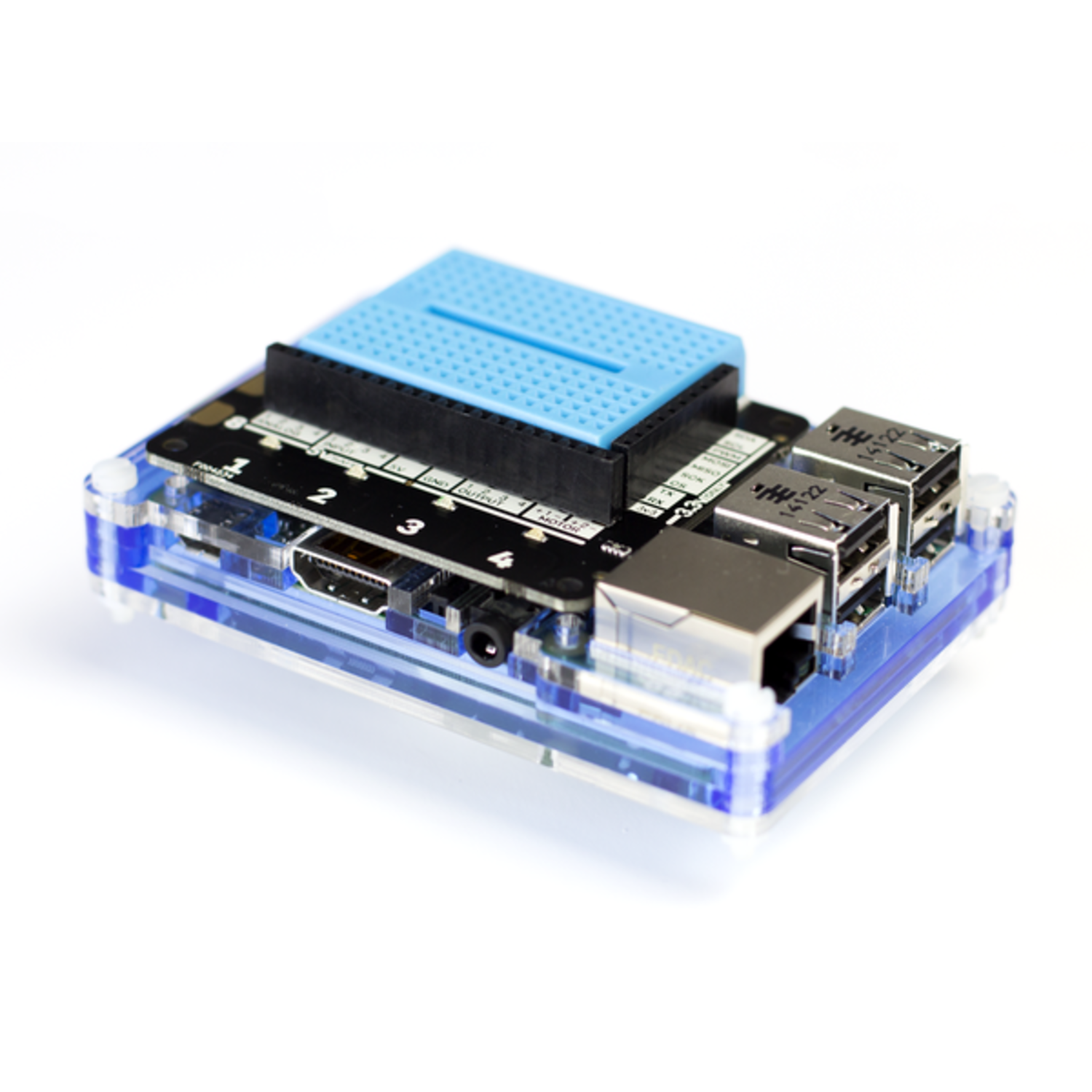The Professional Explorer HAT is an amazing add - on for your Raspberry Pi. It comes loaded with a wide range of useful tools. There are digital inputs and outputs, capacitive touch pads, croc - clip compatible pads, colored LEDs, analog inputs, motor drivers, and a mini breadboard for project prototyping. This HAT is perfect for small robots, games, science experiments, exploring small electronic circuits, and interacting with your Pi. We've also prepared a convenient Explorer HAT parts kit. It includes everything you need to start building circuits, like LEDs, dials, a buzzer, and even a temperature sensor! The Explorer HAT works great with our no - soldering - required micro metal gearmotors and STS - Pi robot kit. Features: Four buffered 5V tolerant inputs for Arduino compatibility, four powered 5V outputs with a total of up to 500mA across all four channels, four capacitive touch pads labeled 1, 2, 3, 4, four capacitive crocodile clip pads labeled 5, 6, 7, 8, four colored LEDs (red, green, blue, and yellow), four analog inputs, two H - bridge motor drivers with up to 200mA per channel and soft PWM control, a bunch of useful 3v3 goodies from the GPIO, a mini breadboard on top, a clear pinout, compatibility with Raspberry Pi 3B+, 3, 2, B+, A+, Zero, and Zero W, a Python library, and it comes fully assembled. Software: Our Python library makes it super easy and fast to understand and use the Explorer HAT, with lots of examples to show off all its functions. Note that our software does not support Raspbian Wheezy. Other notes: The inputs use a 5 - channel buffer that accepts 2V - 5V as logic high, and the mini breadboard has 170 points, 17x5 per half.



Using the Explorer HAT is a breeze. First, connect it to your Raspberry Pi. You can use the digital inputs and outputs for simple on - off control, and the analog inputs for measuring things like voltage. The capacitive touch pads and crocodile clip pads are great for adding interactive elements to your projects. To start building circuits, grab the parts from the included parts kit. Just plug them into the mini breadboard on top of the HAT. If you're using the motor drivers, make sure not to exceed the 200mA per channel limit. When it comes to software, install the Python library. There are plenty of examples that will help you quickly understand how to use all the functions of the Explorer HAT. Remember, our software doesn't work with Raspbian Wheezy, so use a compatible operating system. For maintenance, keep the HAT clean and free from dust. If you're not using it for a long time, store it in a dry place. Also, be careful when handling the parts, especially the LEDs and other small components, to avoid damage.